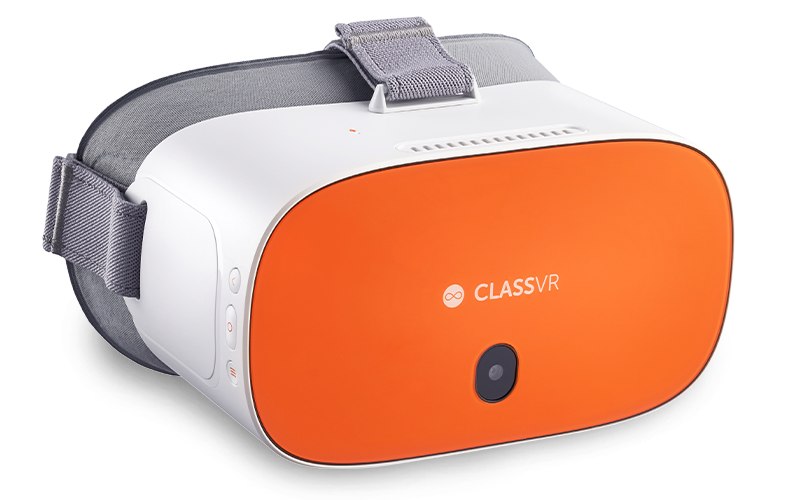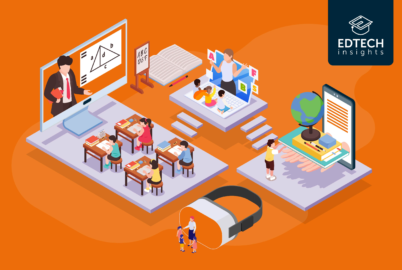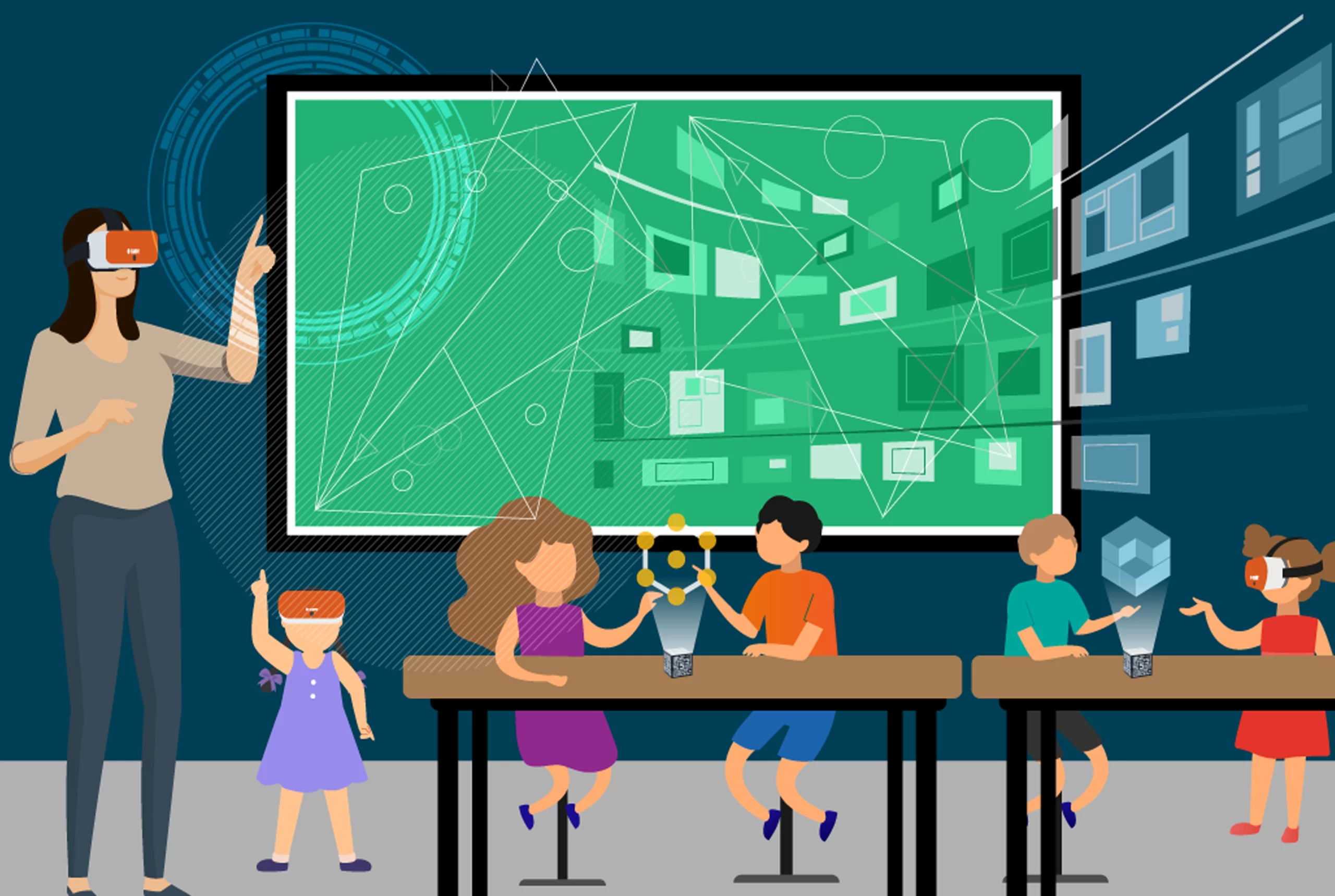
Classrooms and lesson delivery remained largely unchanged for hundreds of years. Instructional methods placed the teacher at the front of the classroom, with chalkboards, textbooks, pencils, and paper all being the mainstay of teaching tools. Fast forward to the 21st century, and the rapid evolution of education technology has overhauled learning experiences. Traditional classrooms are transitioning to become Smart Classrooms - teaching spaces enhanced by a range of technologies, including VR and AR.
Smart Classroom spaces are created by bringing a range of digital solutions into the learning environment. Interactive displays. Visualisers. Tablets. Laptops. VR and AR. The list of technologies to enrich teaching and learning is ever growing.
Moreover, as teachers face the challenge of keeping students focused and motivated in an increasingly digitised world, AR and VR technology offers an effective solution. Bringing virtual reality and augmented reality into a Smart Classroom empowers teachers to create immersive learning experiences that will ultimately increase student engagement and attention. In this article, we’ll explore the role of immersive technologies in Smart Classrooms and share best practice advice on how to embed these into teaching methods and curriculum delivery.
Table of contents
Immersive learning and the Smart Classroom
Most Smart Classrooms start by introducing commonly used edtech tools such as laptops, interactive displays, tablets and visualisers. In recent years, implementation of 3D printers has been on the rise, along with adoption of coding devices and increasingly sophisticated apps. All these technologies help to build a Smart Classroom that is inspirational and engaging by
stimulating auditory, visual, and kinaesthetic learners. However, none of these technologies can create truly immersive learning experiences. Immersive technologies, like augmented reality and virtual reality, are what’s needed to take Smart Classrooms to the next level. But why is immersive learning so important for education today?
Understanding immersive learning
Immersive learning is very similar to experiential learning. Experiential learning uses real-world scenarios to support education in a safe, stimulating and emotionally engaging way.
The Institute for Experiential Learning defines experiential learning as ‘the ideal process of learning, which invites you to understand yourself as a learner, and empowers you to take charge of your own learning and development through different learning styles’. This is highlighted in the diagram below.
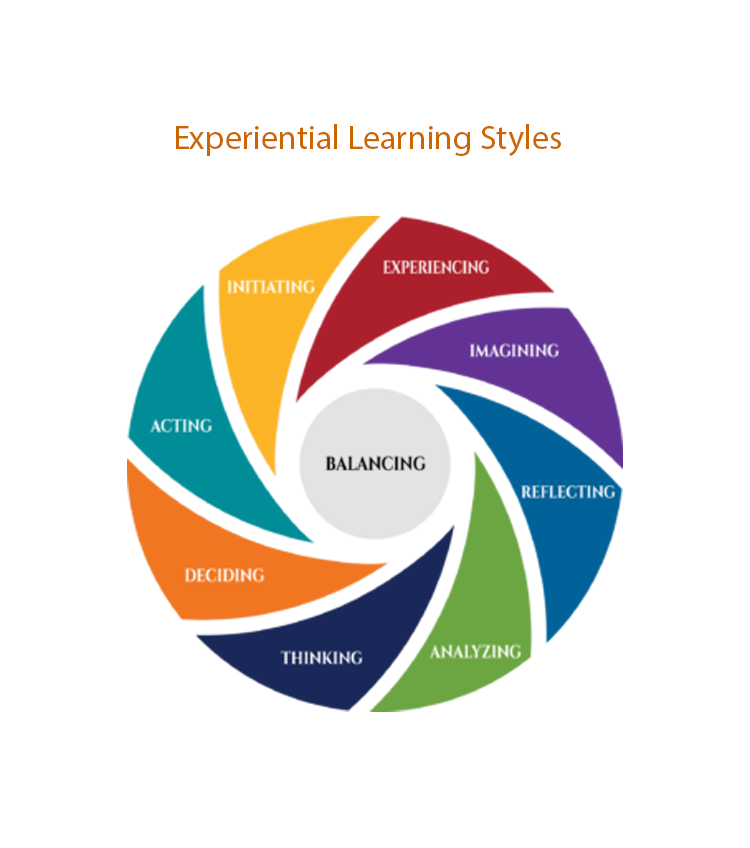
The benefits of experiential learning
The benefits of experiential learning are far reaching, especially when it comes to creating opportunities for students to develop skills which will support lifelong learning. Some of the most recognised benefits of experiential learning are outlined below.
- Creating real-world experiences and relevance
Experiential learning helps to create a sense of relevance. This is achieved by learners' minds being actively engaged.
- Creative problem solving
Experiential learning gives students the opportunity to be more creative in problem-solving by presenting challenges to be resolved in a real-world scenario.
- Speed of learning
Practical experiences can help students acquire new knowledge and concepts quicker. Being hands-on with a task strengthens neural connections which means skills can be learned and retained more effectively.
- Opportunity for reflection
Experiential learning gives students the opportunity to analyse how their actions impact outcomes, while also being able to compare other students’ results to their own. This helps to move students from being passive learners to becoming actively engaged in reflective observation.
- Learning through failure
Making mistakes is a crucial part of learning at any level of education. It allows students to experience, in a safe way, what does and doesn’t work. Where failure or mistakes are encountered, those actions are then avoided in future as students look for alternative approaches.
- Soft skills development
Immersive learning can help students to develop valuable soft skills which are increasingly important for realising their lifelong potential. Communication, teamwork, problem-solving, and decision making are all examples of soft skills that are developed through experiential learning.
Experiential learning and the Smart Classroom
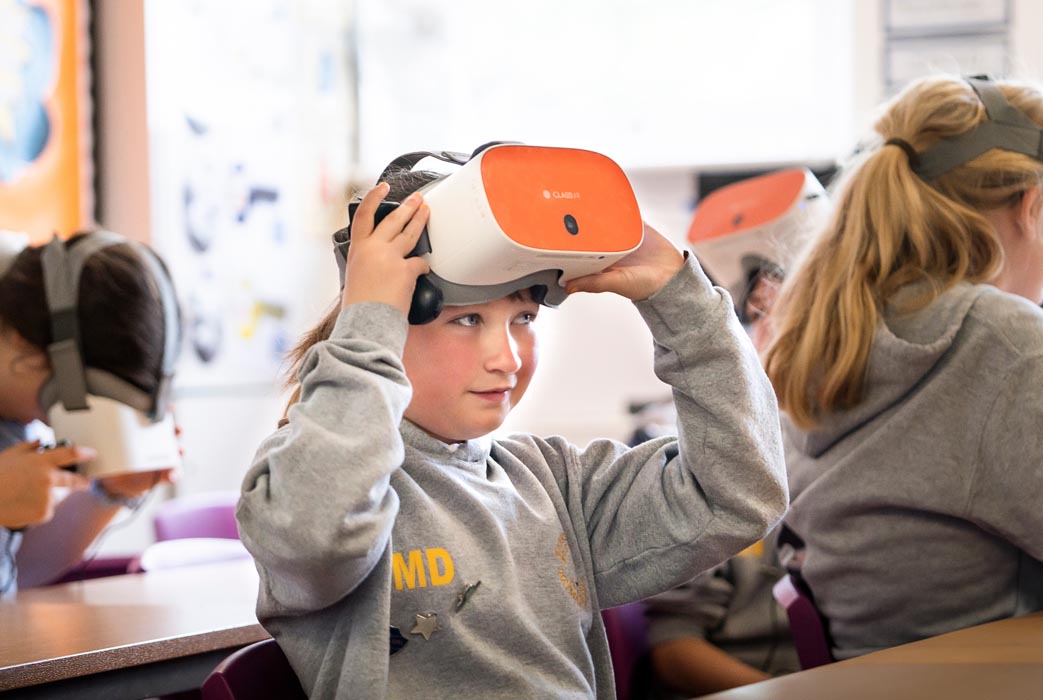
Academic research and studies have presented models and evidence which support the use of immersive technologies – including virtual reality – to create experiential learning opportunities.
One of the more recent of these was published by Makransky and Petersen (2021) in the Educational Psychology Review.
The Cognitive Affective Model of Immersive Learning (CAMIL): a Theoretical Research-Based Model of Learning in Immersive Virtual Reality’ describes six affective and cognitive factors that can lead to immersive virtual reality-based learning outcomes. These include interest, motivation, self-efficacy, embodiment, cognitive load, and self-regulation. The model also describes how these factors lead to factual, conceptual, and procedural knowledge acquisition and knowledge transfer.
For more practical insights on using AR and VR to enhance learning, read ‘three ways virtual
reality can transform education.
With a growing body of evidence that immersive technology can enhance learning, how can schools start to bring augmented and virtual reality into Smart Classrooms?
Bringing immersive technology into the Smart Classroom
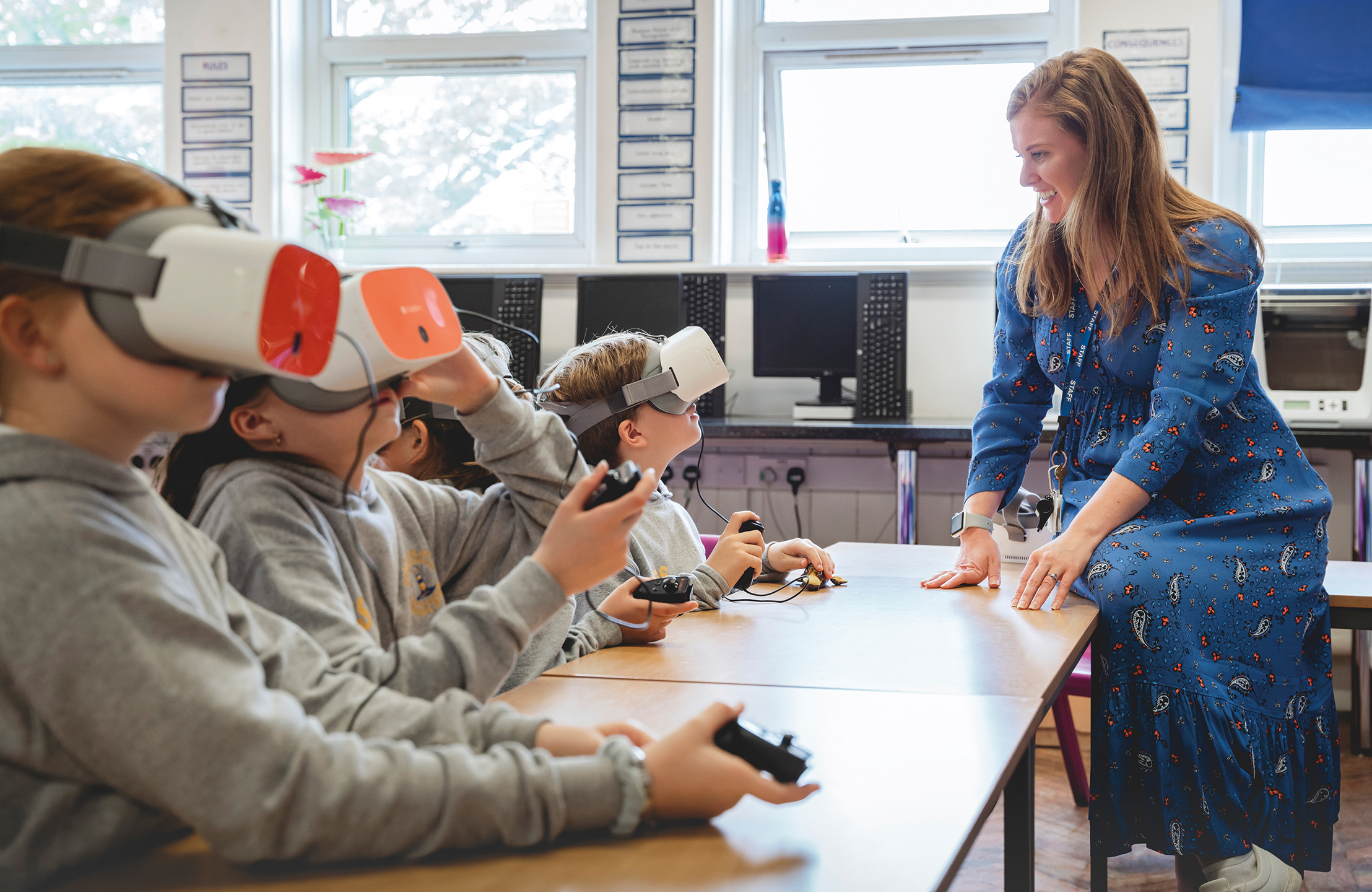
Whether looking to create a new Smart Classroom with immersive technology or planning to enhance an existing Smart Classroom with augmented or virtual reality, the following introduces what you will need.
Augmented and virtual reality technologies are typically a combination of:
- Hardware – the virtual reality headset is essentially a gateway to an immersive learning experience.
- Software – powering the immersive technology, accompanying software or virtual reality portals enable teachers to manage and monitor how students are engaging with immersive learning content.
- Content – this is perhaps the most important part of the immersive technology set-up as it is what students experience.
As with any technology for use in educational environments, there’s a wide choice of solutions available. When evaluating which immersive technology is most suited to your Smart Classroom, there’s a few key things to consider:
- Has the hardware been specifically designed for the classroom? Protect your edtech investment by ensuring that headsets are sufficiently durable and ergonomically suited to students of all ages.
- Will you have access to prepared content developed for education? Content is key when it comes to enhancing learning with immersive technology. When choosing virtual reality for your Smart Classroom, look for solutions which provide access to rich content libraries aligned with local curriculums. This will not only enrich students’ learning experiences, it will also save teachers’ time and help reduce workloads.
- What kind of support with you receive? Working with an immersive technology partner who understands education will give you a supportive platform for initial implementation, and future pedagogical development.
Getting started with VR and AR in your Smart Classroom
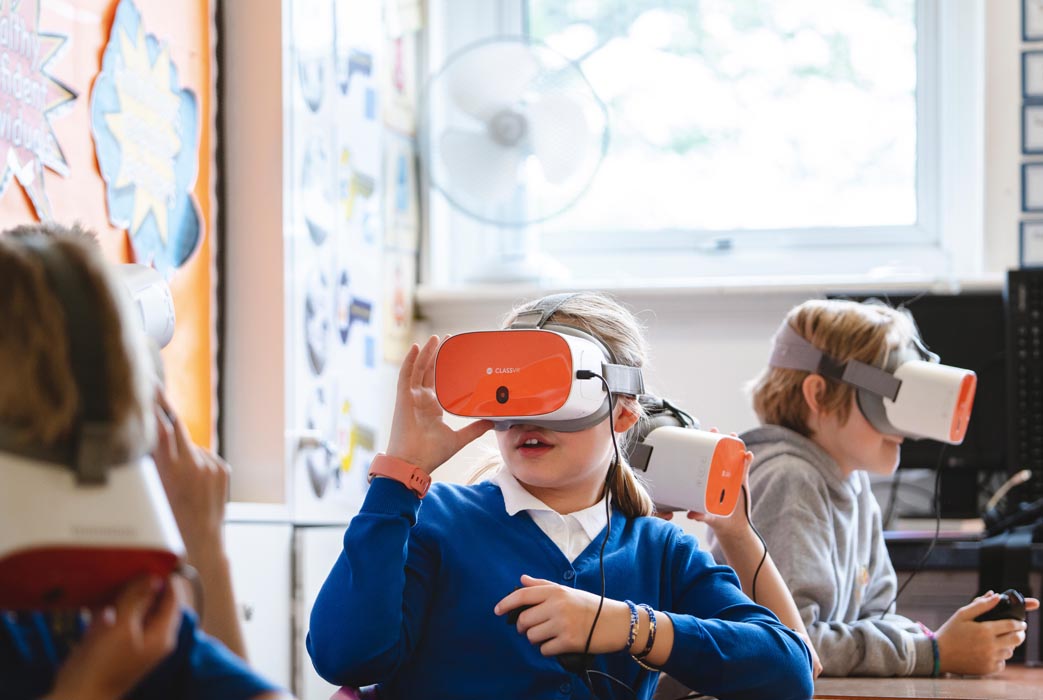
If you’re yet to bring immersive technologies into your Smart Classroom, here’s a quick guide to help you get started.
- Planning - Start by considering where VR and AR fit in your wider ICT and curriculum strategy. Then align this with your edtech budget. If you already have Smart Classrooms in school, planning should also factor in how the existing technologies can work together to enhance learning even further. Also think about available storage space in classrooms and whether there are any SEND pupils who might benefit from immersive experiences.
- Procurement - Consult with at least three providers to evaluate the suitability of their immersive technology solution for education, the value that they can add to your school (including after-sales care), and their existing track record of working with education.
- Implementation - In collaboration with the edtech partner, define your roll out strategy. Some schools prefer to start with pilot programmes where VR and AR is used in select year groups or classes, and then rolled out wider later. Others prefer school-wide adoption from day one and vary between having smaller numbers of headsets in every class, to a shared set of 30 across a department.
Once VR and AR has been implemented according to a school’s preferred strategy, the next step to enhancing learning with immersive technology is ensuring effective adoption – which comes through training, support, and disseminating best practice.
Developing immersive technology best practice
As with any technology in a Smart Classroom, the true value and positive educational impact comes through ensuring teachers have the confidence and skills to use it effectively. The best place to start with developing best practice is exploring any training and support that is available from the manufacturer. For example, ClassVR provides a range of flexible CPD, on-site and online
options that help schools to develop pedagogy with VR and AR, while empowering teachers to explore the potential of the immersive technology.
Sharing best practice case studies is also an excellent way to spark creativity and new ideas for using VR and AR, especially when teachers are just getting started with the technology. In terms of a more structured adoption programme, to help ensure any AR and VR investment is enhancing learning in a Smart Classroom, here are some approaches that schools often use.
- Kickstart with orientations – if VR and AR has been introduced at the start of a new school year, kickstarting ‘back to school’ with an initial orientation session is a great way to introduce everyone to the new immersive technology. Cover basics such as how to set up the hardware and deliver a lesson.
- Create VR and AR Champions – identify any teachers who are naturally curious or particularly excited about using immersive technology to enhance their lessons. Give them access to the virtual reality solutions first and let them explore the potential. They can then share their early learnings with colleagues to provide a foundation to build on.
- Train the trainer – for a more formal roll out of skills, consider introducing an internal train the trainer programme, where a select number of teachers upskill to a more proficient level of using VR and AR. They can then cascade their skills and knowledge throughout the team against timelines that work for the school, and individual development objectives.
The last few decades have seen more change in the way education is delivered than in the past hundred years. Evolution of technology has been a catalyst in that shift, giving teachers access to tools which help to increase student engagement, collaboration, and attainment. As immersive technologies become more commonplace in Smart Classrooms, education is arguably on the cusp of another step change. One where geographical boundaries and financial barriers will be broken down like never before, levelling the playing field for all students to benefit from experiential learning opportunities.
